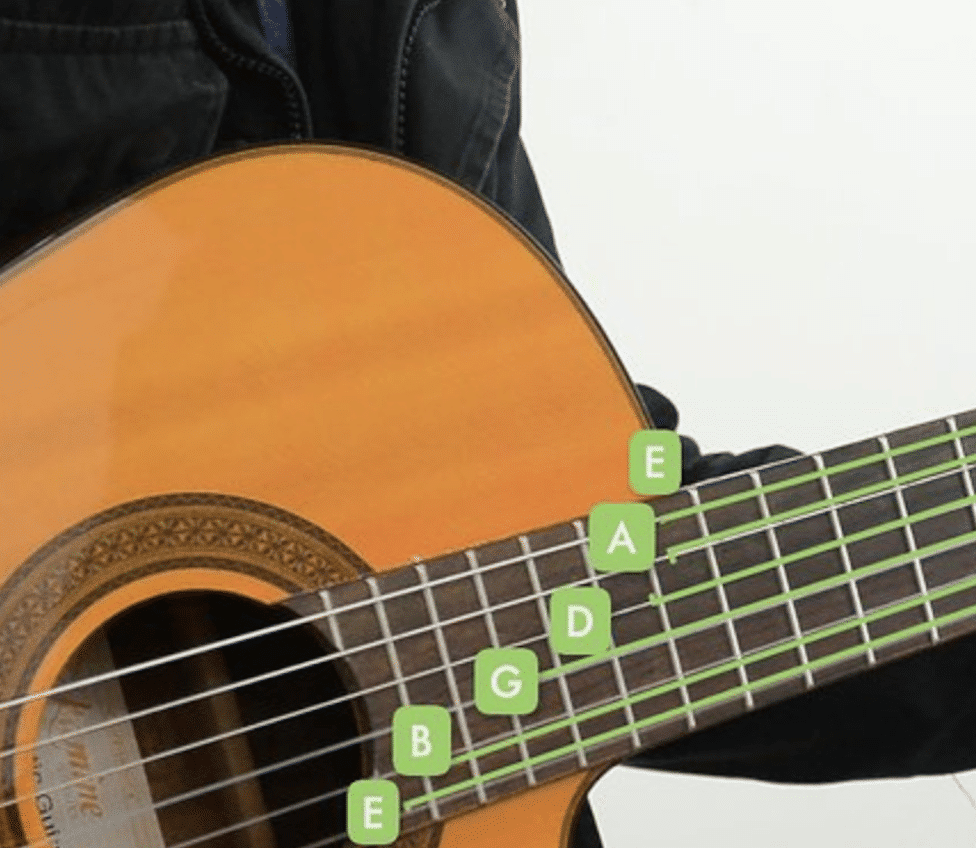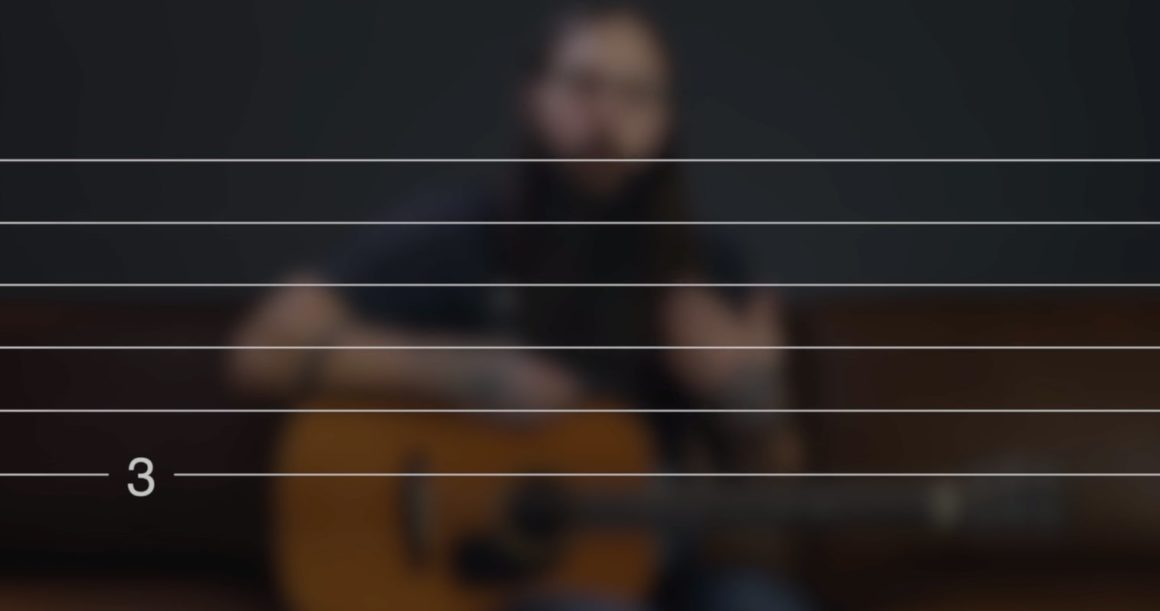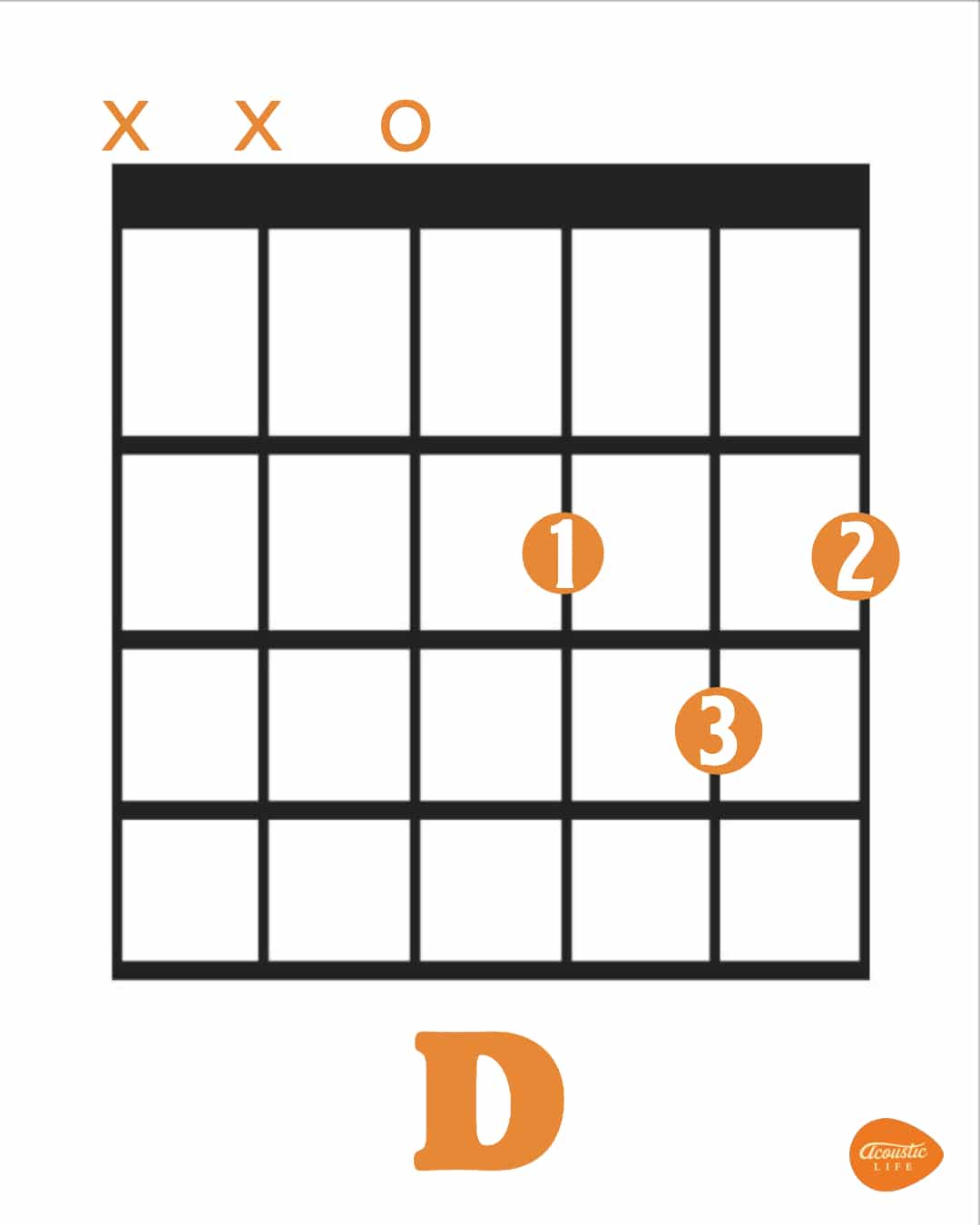

Guitar notes … what are they, and why should you care?
Think of guitar notes as the written language for playing guitar. Everything from chords to melodies uses guitar notes.
Learning guitar notes will help you comprehend new music, hone certain guitar techniques, and communicate with other musicians more easily.
In this lesson, we will cover:
Oh, snap…did I just say the “T” word?
Look, there’s just going to be a tiny bit of theory in this guitar notes lesson. I’ll keep it on the light side — I promise.
Now, if you’re looking for more of a framework of how to practice guitar, I have something for you.
First, if you’re still on the fence about online guitar lessons, I want you to know you’re not alone. While there are many benefits, the biggest problem with online guitar lessons is the overwhelm – but I can help with that.
Second, I want you to know about my guitar reboot workshop that I’m offering for free – to help you overcome your overwhelm. You can learn more about it by clicking here. If you’re someone who thinks guitar is hard to learn, I promise I can show you an easy way to break it down in a way that’s manageable, understandable, and fun.
All I’ll say for now is that this workshop has helped thousands of guitar players already…
Anyways, let’s dive into guitar notes 101…
Before you go any further, you need to familiarize yourself with guitar string notes. Without knowing the string names and notes, we won’t be able to learn any other guitar notes!
Most guitars have 6 strings, each with a different note. In standard tuning, and from low to high, the guitar string notes are: E, A, D, G, B, E. This is constant across different brands and guitar types. Whether you have a Gibson or a Martin, an Ibanez or Epiphone, the notes remain the same.
There are a few phrases you can use to remember each string name: Eddie Ate Dynamite, Good Bye Eddie, or, Elvis Always Dug Good Banana Eating.

Notice that the strings are arranged from thickest (lowest note) to thinnest (highest note). There are plenty of other tunings, called alternate tunings (open C, open G, drop D, etc). For now, let’s stick with standard tuning.

The best way to remember the guitar string notes and their names is to create a mnemonic device. Think of it as a way to help you remember which letters go where. From low to high, the guitar string notes are: E, A, D, G, B, E. So a good saying is: Eddie Ate Dynamite Good Bye Eddie.
There are tons of different mnemonic devices you can use. Shoot, you can even try creating one yourself! Try to make it silly, memorable, and cogent.
Note: The guitar notes for the strings are the same whether you play electric, acoustic, rock, bluegrass, or metal — rock on!
To put it as simply as possible, let’s think about music as a language.
To create a chord, we need a combination of notes grouped together.
Just as a single letter on its own sounds different from a word, notes sound different from chords.
Guitar notes are individual pitches. For example, when you play one string at a time, you’re playing one note.
Here’s an example of some tablature. Check out these links to learn how to read guitar tabs, understand guitar tab symbols, as well as some acoustic guitar tabs for beginners.

As you read the tab from left to right, notice how there’s only one note at a time. This is an example of single guitar notes.
Here’s a quick picture of all guitar notes:

As we said earlier, chords are like words: you create a chord when you take notes and play many of them at once. There are also different types of chords; for example, ordinary chords and power chords. Check out my lesson if you want a quick rundown of chord diagrams!
Try playing this D chord.

You strum all of the strings at once when you play the D chord. Every note is played at the same time to create the chord.
Chords have a richer, fuller sound than guitar notes. Check out this lesson to learn the most essential guitar chords for beginners.
I will never tell you what you can or can’t do. I think you should follow your creative impulses.
However…
It can be incredibly overwhelming when you first start playing guitar. I have a few suggestions to help process the barrage of information out there, but one thing is for sure…
DO NOT spend time memorizing where every single note is on the fretboard.
Instead, learn some basic guitar chords or scales you can apply to songs.
For example, try learning some power chords so you can play your first song, like “Louie Louie.”
If you want to work on guitar notes or solos, check out my lesson on how to solo on guitar – even over the blues (yes, I’ll explain the blues, too!). I also have lessons on how to finger pick and different strumming patterns you can try.
Guitar notes can help you understand the fretboard and the music in general, but it is difficult to play songs just with guitar notes. Here’s why…
There are thousands of songs that use just three chords.
There are few songs where the single-note melody has just three notes.
Additionally, playing chords helps build your finger strength. As you play along with songs or in a jam group, you’ll build up your strength and be able to play for longer periods.
After you feel comfortable playing chords and understand time, rhythm, and musical structure, you can start dabbling in more theory and scales.
However, until you get to that point, playing chords is a great way to start playing the guitar.
I will talk about the fretboard a little more to better understand guitar notes. While you don’t have to know the following information, it will deepen your understanding of the guitar.
If you’re ready to learn the musical alphabet and how guitar notes are arranged on the fretboard, let’s dive in!
Let me clarify: guitars use the same musical alphabet as violins, flutes, basses, and saxophones.
The one difference is in looking at tablature, but that’s more of a musical notation style.
All instruments rely on a musical alphabet that creates a common language for all musicians. The good news is that the musical alphabet only uses 12 notes — unlike the English alphabet, which uses 26 letters!
Here’s one way we can write the musical alphabet:
A, A#, B, C, C#, D, D#, E, F, F#, G, G#, A
We can also write the musical alphabet this way:
A, Bb, B, C, Db, D, Eb, E, F, Gb, G, Ab, A
But what do the “#” and “b” signs mean?
First off, the “#” represents a ‘sharp.’ When you see, A#, you pronounce it as A sharp.
When you see the “b” sign after a note, the “b” represents a ‘flat’. It is pronounced, “A flat.”
In short, sharps and flats are the same things. The difference lies in how you look at a note.
In the example where I wrote out two ways to talk about the musical alphabet, all letters without sharps or flats stayed the same. But for A#, the corresponding flat is Bb. This means that those two notes are the same.
Another way to think about this is about telling time. If it’s 7:30 a.m., you could say it is “30 ’til 8:00.” You could also say it’s “half-past 7:00.” They’re saying the same things in different ways.
While I showed you two different ways of looking at the musical alphabet with all the guitar notes, you’ll most likely see the alphabet written with flats and sharps.
Let’s look at the musical alphabet that uses all sharps again:
A, A#, B, C, C#, D, D#, E, F, F#, G, G#, A
Did you notice how there aren’t any sharps or flats between B and C, and E and F?
These are the only cases where there aren’t flats or sharps that can be attached to notes. Instead, B# is essentially C. Never refer to C as Cb/B#.
As I’ve explained in other lessons, every fret on your guitar represents a guitar note. As each fret goes up by one number, you move up the musical alphabet by one space.

Think of the open string you pluck as starting at 0. From there, you move up one space in the musical alphabet.
If you pluck the low E string (the thickest string) and move up one fret, you’ll be playing an F note. Remember that there’s no sharp or flat note between E and F!
As you move up one fret at a time and pluck each guitar note, you’ll hear the pitch get higher as you move up the fretboard. Here’s the full order of notes you play if you go all the way to the 12th fret:
Once you hit the 12th fret, you successfully played a full octave. In those 12 notes, you’ve played the entire musical alphabet!
Try descending and using flats as you feel comfortable thinking about ascending the guitar’s fretboard in sharps!
From the 12th fret down, the notes will be arranged like this:
The reason why moving down the fretboard is difficult is because most people don’t know the alphabet in reverse!
Fortunately, you just need to become familiar with A-G, forward and backward.
If you want to help solidify your understanding of guitar notes in relation to the fretboard, try saying the notes out loud as you play them. So when you’re on the 5th fret of the low E string, you audibly say “A.”
You may have noticed that finding guitar notes high up the fretboard can feel disorienting. It’s almost like having fretboard vertigo!

If you look at the neck of the guitar — and the side of the neck that faces you — you’ll notice little dots or markings embedded into the neck. These are called fret markers.
Fret markers help you find frets faster and, in turn, see the right guitar notes.
On most guitars, the fret markers are placed on the 3rd, 5th, 7th, 9th, and 12th frets.
If you ever lose your place on the fretboard, you can use the fret markers to guide you toward the guitar note you want to play.
Guitar notes that do not have sharps or flats attached to them are called naturals. Naturals within the musical alphabet are A, B, C, D, E, F, and G.
The notes are called naturals because they have no sharps or flats. As you try to find naturals on the fretboard, there are a few different rules that you can keep in mind
There are 2 frets between A and B, C and D, F and G, and G and A.
There is one fret between B and C and E and F.
For this exercise, you will find all of the naturals on the low E string (that’s the thickest one!).
Fortunately, we know that the low E string is natural. That means we have to move either a whole-step or half-step to get to the next natural.
If you remember the rules we laid out, there’s always going to be a half step between E and F
As you continue to move up the neck, just remember the rules we laid out earlier, and be sure to mind the half step between B and C!
Once you feel comfortable working on the low E string, I want you to try finding all the natural notes on the A string, the D string, the G string, and the B string.
As you look for the natural guitar notes, notice that the placement of the naturals changes depending on the strings you use.
We covered naturals, sharps, and flats when finding guitar notes on your fretboard. Now, I want to focus more on sharps and flats.
I’ve noticed in teaching beginners about guitar notes that it might take a few explanations to make an idea snap into focus.
Now that I’ve firmly established what natural notes are, we can think of sharps and flats as the space between natural notes.
Do you remember that whole step between A and B? Well, if you only move a half step (move in between two naturals), then you’ve found a sharp or flat!
Now that I’ve gone over naturals, sharps, and flats, I want to solidify the relationships between certain guitar notes.
Think of this exercise as a mental walkthrough of the fretboard to ensure you understand guitar notes effectively.
Here’s a quick way we can move between the guitar notes E and F:
The relationship between the F and G guitar notes is standard.
These are just two examples of how you can better understand guitar notes and the relationships between each one.
Now that you have a better idea of guitar notes and how your knowledge can help your playing, perhaps you’re ready to take the next step in your guitar journey.
Do you remember the workshop I told you about earlier? Look, I won’t be offended if you can’t make it…but I’d love to see you there.
Watch this FREE guitar class for three secrets to learn guitar faster in just 10 minutes a day.